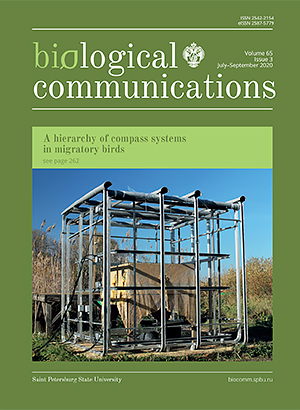Features of hemodynamics of pulmonary circulation during the diving reflex
DOI:
https://doi.org/10.21638/spbu03.2020.304Abstract
The adaptive cardiovascular reactions of the human diving reflex were studied. The diving reflex was activated by submerging a face in cold water under laboratory conditions. Forty volunteers (aged 18–24) were examined. ECG, arterial blood pressure (ABP) and central blood flow were recorded by the impedance rheography method in resting state, during diving simulation (DS) and after apnea. During DS there is a statistically significant decrease in the dicrotic index (DCI), which reflects a decrease in the resistive vessel tone and as well as diastolic index (DSI), characterizing lung perfusion. A comparison of the latent periods (LP) of an increase in ABP and a drop in DCI showed that a decrease in pulmonary vascular tone develops faster than ABP begins to increase. The LP for lowering DCI is from 0.6 to 10 s; for an increase in ABP — from 6 to 30 s. A short LP for DCI and the absence of a correlation between a decrease in ABP and DCI suggests that a decrease in pulmonary vascular tone during DS occurs reflexively and independently of a change in ABP.
Keywords:
diving reflex, systemic circulation, pulmonary circulation, impedance rheography, plethysmography
Downloads
References
Downloads
Published
How to Cite
Issue
Section
License
Articles of Biological Communications are open access distributed under the terms of the License Agreement with Saint Petersburg State University, which permits to the authors unrestricted distribution and self-archiving free of charge.





